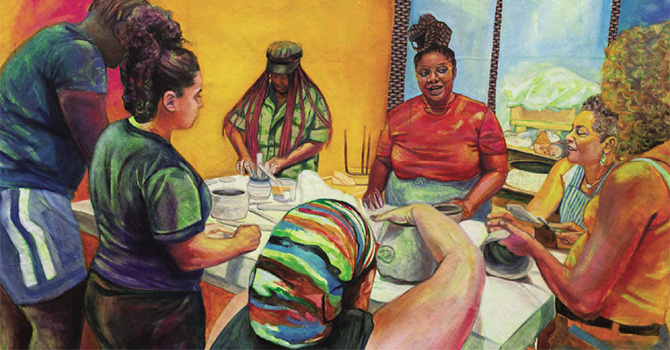At an annual art fair I attend, I am always drawn to the crazy guy with the shaggy beard and floppy sunhat, who demonstrates rock balancing for the crowd. Using rocks he finds on the fair grounds, he spends the day stacking beautiful stones so that they balance in what seems like wildly impossible ways.
Rock balancing is an ancient art form that has been practiced by cultures around the world for centuries. Used to mark human presence, to give thanks, for religious purposes and for meditation, or as sculpture, rock balancing is the art of placing rocks in combination, using gravity as the only glue.
How does one do it?
Artist Michael Grab writes, “The most fundamental element of balancing in a physical sense is finding some kind of ‘tripod’ for the rock to stand on. Every rock is covered in a variety of tiny to large indentations that can act as a tripod for the rock to stand upright, or in most orientations you can think of with other rocks. By paying close attention to the feeling of the rocks, you will start to feel even the smallest clicks as the notches of the rocks in contact are moving over one another. In the finer point balances, these clicks can be felt on a scale smaller than millimeters. Some point balances will give the illusion of weightlessness as the rocks look to be barely touching.”
According to the experts, rock balancers use several kinds of balance when building their creations: Pure balance -- each rock in near-point balance; counter balance -- the lower rocks are dependent on the weight of the upper rocks to maintain balance; balanced stacking -- rocks are lain flat upon each other to great height; and free style -- a mixture of all the styles, which may include the use of arches and sandstone.
Common sense tells us that smaller rocks must be stacked on larger ones. But in rock balancing, a huge rock can balance on a smaller one -- if placed with care, patience, vision and sensitivity. Sometimes a small pebble is tucked here or there.
What might it take for us to create such balance, playfulness and harmony in our institutions?
In Matthew 16:18 Jesus tells Peter that he is the rock on which the church will be built. It seems to me, then, that the fine art of rock balancing can provide Christian leaders with a provocative model for building thriving communities.
- Rock balancing calls on us to be patient and sensitive. It takes time to know the rocks, to understand that they may have angles and indentations that are not immediately apparent, but that are crucial to the construction of the entire structure.
- Rock balancing requires us to be creative, to think outside the box. Rock balancers attempt improbable combinations, not because they have seen them work together with stunning results, but because they are master improvisers, discarding options until they find the perfect fit.
- Rock balancing demands attention to detail. Rock balancers are mindful of the small dents and cracks which make rocks being in relation possible. They trust in what Grab calls the “smallest clicks” that mean the rocks are moving in harmonious contact with one another.
- Rock balancing elicits a sense of joy and delight in the creation. My crazy friend at the art fair draws my attention each year, as well as a crowd, because of the delight he takes as he experiments with combinations that make a serendipitous, breathtaking, if unexpected, whole.








